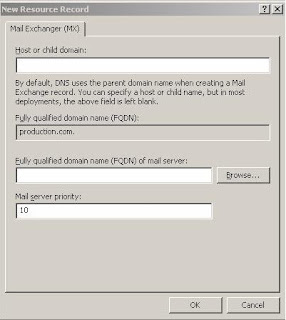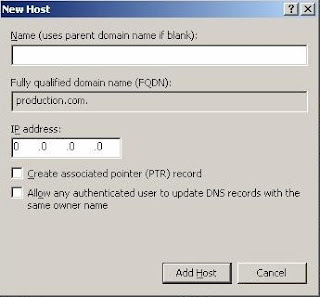An introduction to DNS records
Start of Authority (SOA) records
There are often multiple DNS servers that service a domain. Multiple DNS servers might be used for load balancing, fault tolerance, or both. But, only one DNS server within a domain is considered authoritative.
The authoritative DNS server contains a read/write copy of the records database. Non-authoritative DNS servers are read-only. A Start of Authority (SOA) record points to the domain's authoritative DNS server. It also contains a sort of sequence number that is updated every time a change is made to the records contained within the zone. This helps non-authoritative DNS servers stay in sync with the authoritative DNS server.
Name Server (NS) records
A Name Server (NS) record is similar to an SOA record in that it points to the domain's DNS servers. The similarities end there though. Each DNS server in the domain gets its own NS record, regardless of whether it is authoritative or not.
Host records and Alias records
Probably the most common type of DNS record is a Host record (also called an A record). A Host record is simply used to associate a computer on your network with an IP address.
For example, I have a server on my network named RELEVANT. I therefore also have a Host record on my DNS server that links the name RELEVANT to the server's IP address.
It just so happens that the server RELEVANT is hosting a Web site on my domain. However, when people want to visit my Web site, they do not enter relevant.brienposey.com, even though that is the fully qualified domain name (FQDN) of the server hosting the Web site.
Instead, they enter www.brienposey.com. This is where the Alias record (also called a CNAME record) comes into play. An Alias record's job is to associate an alternate name with a computer for which there is already a Host record. For example, suppose that the host record for relevant looked like this:
Relevant Host (A) 147.100.100.97
When someone enters www.brienposey.com, I want them to be directed to the relevant.brienposey.com server. Since there is no server on the network named "www," I set up an Alias record that associates www with relevant.brienposey.com. The Alias record looks something like this:
www Alias (CNAME) relevant.brienposey.com
MX records
An e-mail message finds its way to its destination via an MX record.
An e-mail address is made up of a recipient name and a domain name (recipient@brienposey.com). I already explained how DNS queries are used to locate a DNS server for a specific domain. The process works exactly the same way when you send an e-mail message to a recipient in another domain.
The difference is that your mail client isn't interested in the IP address of your Web server -- it needs to know the IP address of your mail server. That's where the MX record comes in.
An MX record stores the IP address of your SMTP server, so e-mail clients can determine where a message should be sent. They simply perform a DNS query against a domain's MX record to get the IP address of the organization's SMTP server.
How to create an MX record ??
1. To create an MX record on a Windows Server 2003 DNS server, select the DNS command from the server's Administrative Tools menu to open the DNS console.
2. Navigate through the console tree to DNS -> your server -> Forward Lookup Zones -> your domain.
3. Right click on the listing for your domain and select the New Mail Exchanger (MX) command. You will see the New Resource Record dialog box shown in Figure A.
2. Navigate through the console tree to DNS -> your server -> Forward Lookup Zones -> your domain.
3. Right click on the listing for your domain and select the New Mail Exchanger (MX) command. You will see the New Resource Record dialog box shown in Figure A.

Figure A
Use the New Resource Record dialog box to create an MX record.
- The first field on this dialog box asks for the name of a parent or child domain. In most cases, this field will be left blank.
- The fully qualified domain name (FQDN) is filled in automatically.
- Just below that is a field asking for the FQDN of the mail server -- not the mail server's IP address.
- What this means is that, unless you have a Host record in place for the mail server, the MX record isn't going to work The last field on this dialog box is a priority number.
- If you are only planning on using one MX record, you don't have to worry about changing this number. But many organizations (including my own) have multiple Exchange servers.
How to set up a Host record ??
MX record won't work without a Host record in place, so let me explain how to set one up: - In the DNS console, right click on your domain listing and select the New Host (A) command from the shortcut menu to view the dialog box shown in Figure B.
- Enter the server's name in the Name field. Be sure to use the simple name, not the fully qualified domain name (relevant -- not relevant.brienposey.com).
- Now enter the server's IP address and click the Add Host button

Figure B
You don't have to worry about creating a PTR record unless you plan on supporting reverse DNS queries. Also, you usually don't want to check the "Allow Any Authenticated User to Update DNS Records" checkbox for security reasons.

